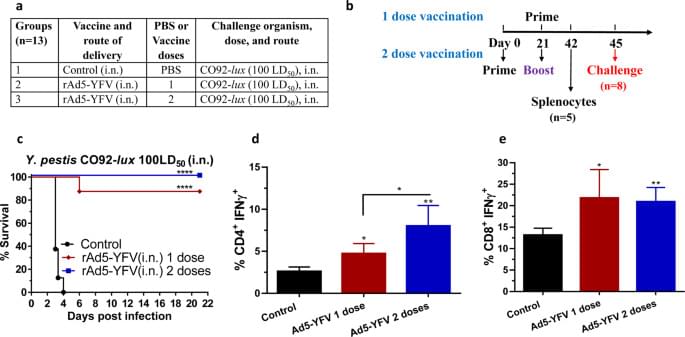Biomedical science assumes that people want to live as long as possible. They don’t.
Category: biotech/medical – Page 791
Why do antidepressants take so long to kick in?
Have you ever wondered why SSRIs take time to show effects? A new study has delved into why antidepressants like SSRIs take weeks to start working and how this may impact mental health care.
SSRIs, or Selective Serotonin Reuptake Inhibitors, belong to a category of antidepressant drugs designed to elevate serotonin levels in the brain. Notable examples of SSRIs include fluoxetine (Prozac), sertraline (Zoloft), and escitalopram (Lexapro).
These medications generally have few unpleasant side effects and can be highly effective in treating various mood disorders, including depression and certain anxiety disorders. However, one significant drawback of SSRIs is the delayed onset of their therapeutic effects — SSRIs often take several weeks to show noticeable improvements in mood.
This extended period before “kicking in” poses challenges for patients and healthcare providers. Yet, the reason behind this lag in action is not well understood.


Scientists find ‘key’ to potential breast cancer prevention and treatment
Every time a cancer cell divides, it sustains damage to its own DNA molecules. Researchers, including Gaorav Gupta, MD, Ph.D., associate professor in the Department of Radiation Oncology at the UNC School of Medicine, have long wondered how cancers are able to evade detection by the body’s own defenses, despite the immune system being on constant watch for cells displaying DNA damage.

Future of Tech: DNA Computing
The computing power of today is based on increasingly teeny tiny bits of silicon, transistors. What happens when we can’t make them any smaller, and the CPUs in our computers any faster? In this episode of Future of Tech, we explore a possible solution in the world of DNA computing.
/ @acloudguru.
Resources:
What is DNA Computing.
https://interestingengineering.com/wh…
DNA Data Storage in Azure Cloud.
https://www.technologyreview.com/2017…
Writing “hello” with DNA
https://news.microsoft.com/innovation…
The Next Level in Computing: Liquid DNA Computer, More Advanced than Quantum Technology
Embark on a captivating journey into the world of DNA computing in this odyssey! Join us as we unravel the secrets behind this cutting-edge technology, where the building blocks of life transform into powerful computational tools. From its intriguing origins to the complex processes of molecular magic, we unravel the secrets behind DNA’s newfound role as a liquid computer. Join our enlightening odyssey as we venture through the historical milestones and the innovative techniques that have propelled this field into the future. Discover how DNA molecules, once the code of life, are now decoding complex problems, ushering in an era of limitless possibilities. Don’t miss out on this exciting adventure – the future of molecular computing awaits!\.
The Math Behind Building An AI Using DNA #SoME3
This is an AI called a Neural Network. But all of the transistors and electronics are replaced with DNA, the molecule of life… all in one test tube.
Papers used for this video.
DNA Neural Networks: https://www.nature.com/articles/s4225…
Computation Via DNA: https://www.nature.com/articles/s4159…
DNA logic circuits: https://www.nature.com/articles/s4146…
Matrices Using DNA: https://onlinelibrary.wiley.com/doi/1…
Music:
City Life – Artificial. Music (No Copyright Music)
Link:
Pure Water by Meydän.
Link: • Meydän — Pure Water [Creative Commons…
Forever Sunrise — by Jonny Easton.
Link: • Forever Sunrise — Soft Inspirational…
Softwares used:
Manim CE
Keynote.
Blender.
Molecular Nodes by @BradyJohnston.
0:00 Intro.
1:03 Neural Networks Recap.
3:40 DNA Computing Introduction.
7:20 DNA Transistor.
9:55 DNA Matrix Multiplication.
11:11 Closing Thoughts
The Neuroscience of Learning and Memory
Jeanette Norden, Professor of Cell and Developmental Biology, Emerita, Vanderbilt University School of Medicine, explores how the brain learns and remembers. This video focuses on a discussion of how the brain is organized in general.
These lectures will provide the foundation.
information necessary to the understanding.
of the lectures which will follow. A special.
emphasis will be given to systems in the brain.
that underlie learning and memory, attention.
and awareness. These introductory lectures.
will be followed by a lecture on how different.
areas of the brain encode different, specific.
types of information—from the phone number.
we need only remember for a few minutes or.
less to the childhood memories we retain for.
a lifetime. We will also address the \.

A new generation needle- and adjuvant-free trivalent plague vaccine utilizing adenovirus-5 nanoparticle platform
Kilgore, P.B., Sha, J., Andersson, J.A. et al. A new generation needle-and adjuvant-free trivalent plague vaccine utilizing adenovirus-5 nanoparticle platform. npj Vaccines 6, 21 (2021). https://doi.org/10.1038/s41541-020-00275-3